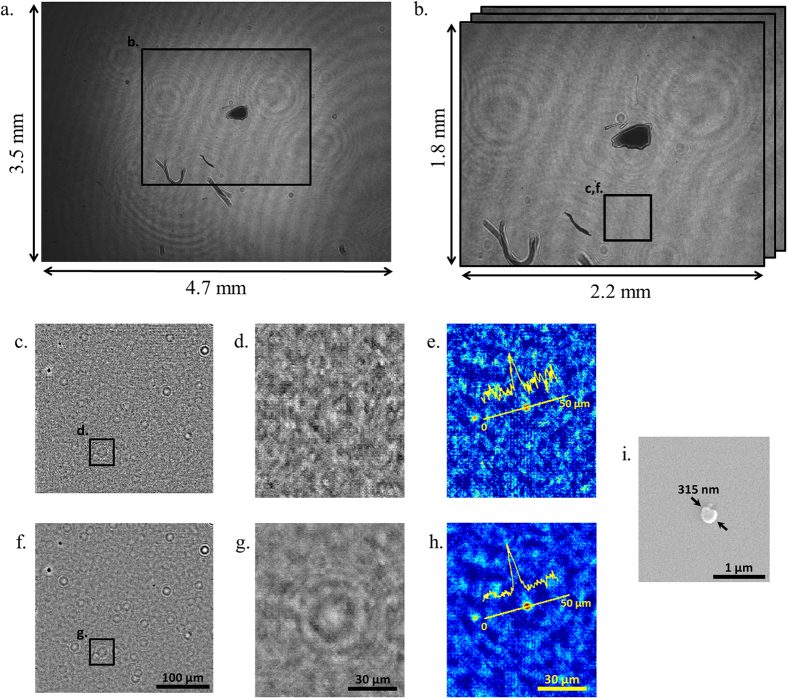Figure 2.
(a) A full FOV image (FOV > 16 mm2) captured by the UV on-chip imaging platform. (b) A zoomed in image taken from (a). (c) and (f) Super-resolved holographic image generated by only the first 196 sub-pixel shifted frames (no circular averaging) and by all the 556 images (196 sub-pixel shifted and 360 circularly shifted), respectively. (d) and (g) A zoomed-in comparison of the super-resolved hologram without and with circular averaging, respectively. The background noise is significantly reduced and the in-line hologram of a particle is more visible with the circular averaging. (e) and (h) The phase reconstruction of both of the high-resolution holograms shown in (d) and (g), respectively. As visible from the image profile across the target, circular averaging helps suppress the background noise considerably. The target in this example was a 315-nm nanoparticle, imaged after nanolens deposition28,29. (i) The SEM image of the target nanoparticle in (e) and (h).

